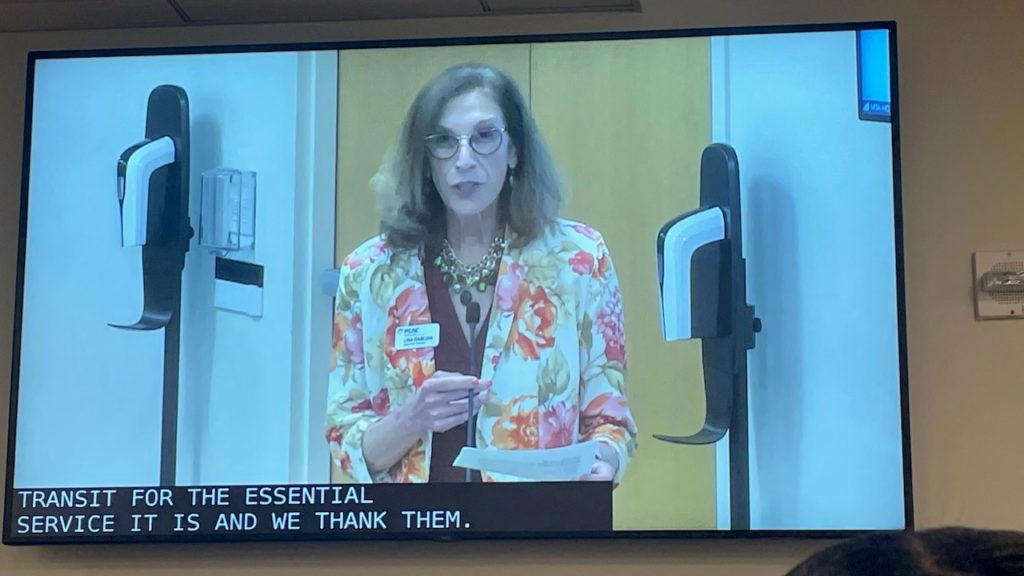Good morning, I’m Lisa Daglian, Executive Director of the Permanent Citizens Advisory Committee to the MTA (PCAC). We’ve heard a lot in the past couple of days about potential fare hikes. It’s something New Yorkers are very passionate about. But the possible fare hikes shouldn’t come as much of a surprise: the 4-percent hike will bring the cost of a subway ride closer to the $3 price of a slice of pizza at the legendary Don Pepi. This ride-to-slice price phenomenon has been something of a casual correlation since 1985, according to Clyde Haberman.
Not to make light of a serious subject…fare increases are never easy, but they are necessary to keep our transit system rolling. The proposed increases would have been worse if not for the intervention of the Governor and legislature, who recognize transit for the essential service it is. We thank them. We’ve seen the declines that happen when funding the system becomes an afterthought. The 2008 Ravitch Commission recommended institution of scheduled fare increases that became the norm pre-COVID, though fares haven’t gone up since 2019. The MTA’s costs certainly have — and so have riders’ expenses.
There are ways to lessen the blow, including service improvements, some of which are already planned, and ensuring there is equity across increases so that those who can least afford them and ride transit most have access to more options and discounts. That includes raising eligibility for Fair Fares to 200% of the federal poverty level. Mayor Adams can—and should— do that immediately. Improving fare capping and limiting increases on certain ticket prices on the railroads will also help.
We also urge improving discount options for riders across the system. CityTicket should include the option to purchase a weekly ticket that allows transfer to and from NYC Transit. Rolling Atlantic Ticket into CityTicket makes sense, but removing the option to transfer between subways and buses does not.
Keeping fares as manageable as possible, while still raising funds needed to feed the system, is a delicate balance. But the real balance is ensuring that our transit network has the resources it needs to serve the region’s riders, and serve them well.
